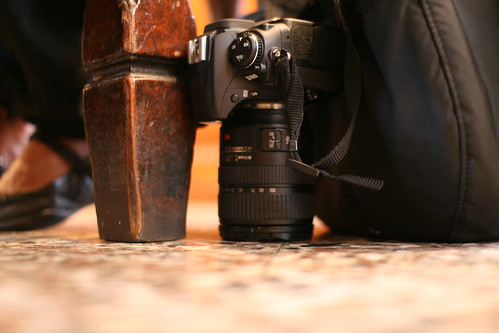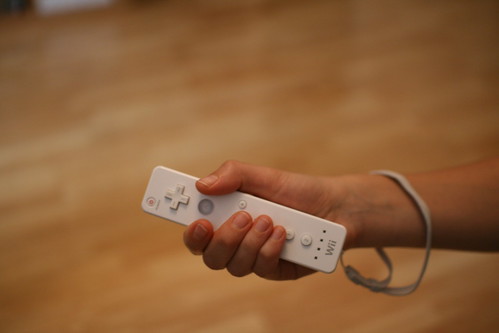Working lately on how a course and a seminar concerning how ethnography can produce relevant and adequate material for design, I read "The ‘adequate’ design of ethnographic outputs for practice: some explorations of the characteristics of design resources" (by Tim Diggins & Peter Tolmie) with great interest. Published in Personal and Ubiquitous Computing in 2003, it used to sit on my laptop for ages and I finally got time to peruse it properly.
The paper deals with the difficulties of making good use of ethnographic output in multidisciplinary user-centred design team and discusses some pertinent observations about the kind of characteristics the result may take for a successful collaboration between designers and UX researchers. Although they acknowledge there is no overall consensus concerning this question, the authors acknowledge the importance of employing diagrams as representational devices. Which reminds me of this other paper by Hughes et al. entitled "Moving Out from the Control Room: Ethnography in System Design" which claimed that "The output of ethnographic analyses are typically discursive and lengthy, looking nothing like the blueprint diagrams which are de rigeur in systems engineering".
After an analysis of few ethnographically-inspired diagrams, the authors nail out the characteristics and problems that can be encountered. They propose their own representational vehicle along with an organizational solution:
"so that a particular formulation of ethnographic material is locally (indexically) relevant, it must have provide for mutual appopriateness among the interested parties (i.e. the design team). And mutual appropriateness is something that is worked up in situ between the ethnographer and designer, rather than something open to generic pre-
formulation. The grounded innovation map was, for us, a mutually appropriate means of representing the ethnographic work for design, and it was designed and redesigned by us according to current need. (...) It’s worth noting that the actual work of arriving at a mutually appropriate (and mutually acceptable) form, is arguably the most important output of the formulation itself – it is in this collaborative design and negotiation that some of the most important transfer of understandings can take place.
(...)
The interest is not in exporting detail, but rather in supporting the provision of information that is relevant and meaningful for the purposes in hand. At the same time it is important not to consider these devices to be offering generalisations to cover all ends (...) it is a mistake to presume that generic claims will be relevant and meaningful to just any particular design enterprise
(...)
This also forcefully underscores the importance of colocating designers and ethnographers on the same design teams."

They then describe the different characteristics of such representation (that they the "grounded innovation map" as represented above):
- Form: economy (appropriate for its presentational use, whether screen-based or on paper), appropriate format (to a given subset designers)
- Use: ordering & logic of practice (how the representation is delivered), indexicality (should have
internal features that can be pointed out and explicated in a variety of ways, both in terms of occasioning particular ethnographic accounts and/or recollections for debriefing), mnemonicity (a resource for a member of the design team, for calling to mind instances from the fieldwork)
- Embededness: iconicity (physical resource and support for talking about
the ethnography in multiple settings), sequentiality and organisational accountability (serve to show that certain kinds of work and collaboration have been done), integration (provide common resources for those right across a multidisciplinary/multi-organisational project)
- Warnings: reductivity (it may be seen to replace the diversity and irreducibility of the fieldwork observations.), constraint (the local groupings and categorisations within
the representation may come to have too great a significance and become constraints on further interrogation of the fieldwork and thinking about the design space.)
- Strategies for coping with warnings: change (engendering a lack of attachment to a
particular phase of the representation by continual editing and change), instantiation (the deliberate bringing-up of ‘difficult’ instances that cut across the local categorisation), open-endedness/incompleteness (the deliberate avoidance of once-and-for-all formulations that are presumed to ‘explain’ the domain for all purposes), self-insufficiency (Making sure that the representation is not self-sufficient, but instead requires either a locally gathered competence with it or an accompanying explanation).
Why do I blog this? always struck by how this topic is rarely discussed on depth in various UX/IxD/HCI documentation, I am starting to collect material about it to go beyond the current practices. I do admit that some of the ethnographically-inspired research I've dealt with lately were not that imaginative in terms of output and I want to change this. Perhaps it can be caused by the client (who want above all a report with text, text and text) but I am sure one can iron out more adequate material. I generally use lots of pictures in my report too and some higher-level diagrams but it's always good to have some pointers and guidelines about how to craft them more nicely.
On a side note, I am wondering about the importance of providing both primary (pictures, narratives, video excerpts) and secondary data (higher-level representations such as diagrams). Combining both in a topic-map way could be a solution, as described in the paper.
Finally, I found interesting here the notion of organizational solution, with the UX researcher(s) and designer(s) working together to produce this output. Too often both are working in different units and not producing something together.
Diggins, Tim, and Peter Tolmie (2003) "The 'adequate' design of ethnographic outputs for practice: some explorations of the characteristics of design resources" in Personal and Ubiquitous Computing, Volume 7 (3-4) July.
 This colorful
This colorful 

















